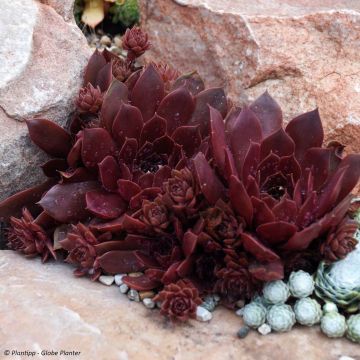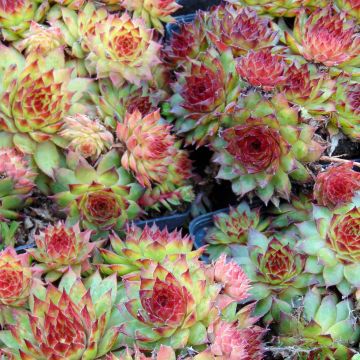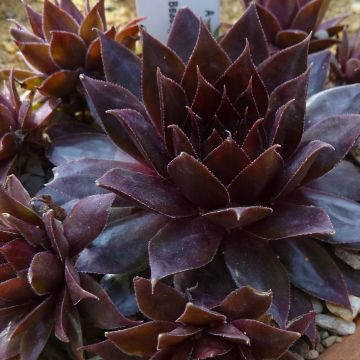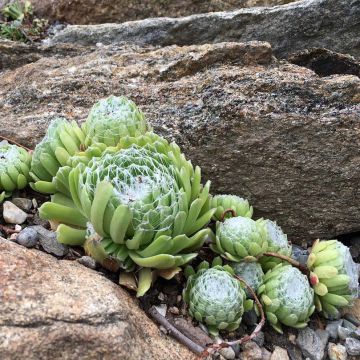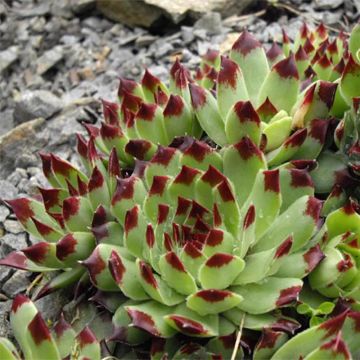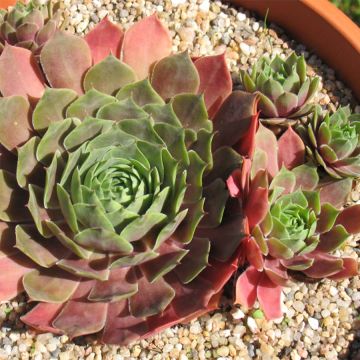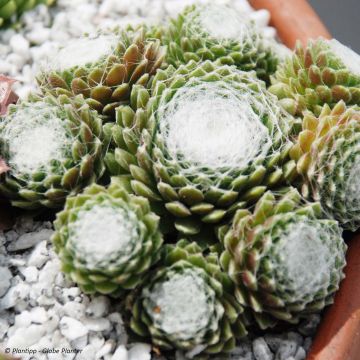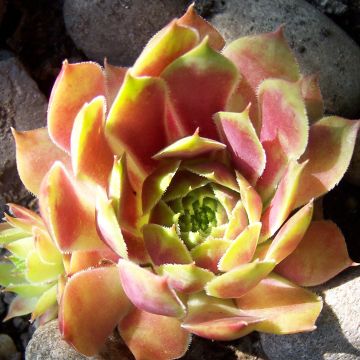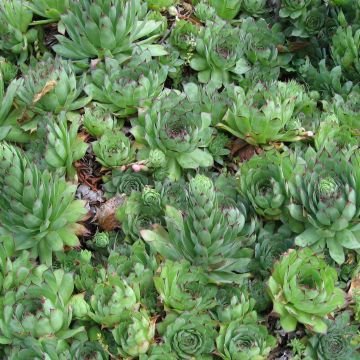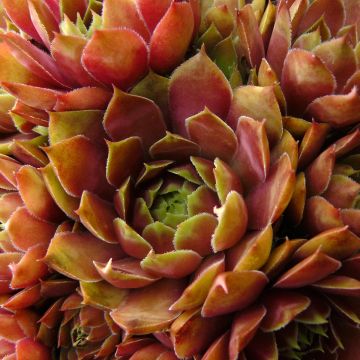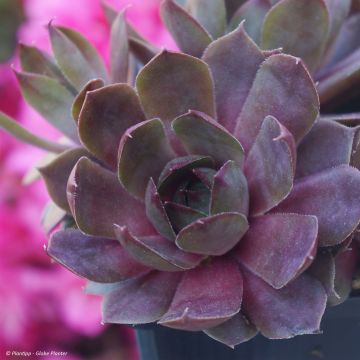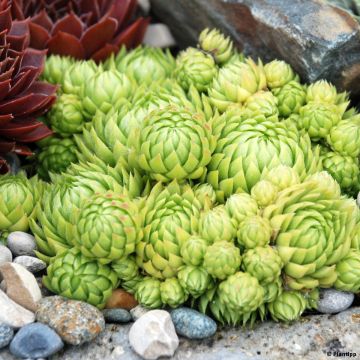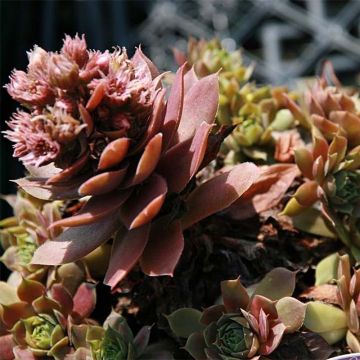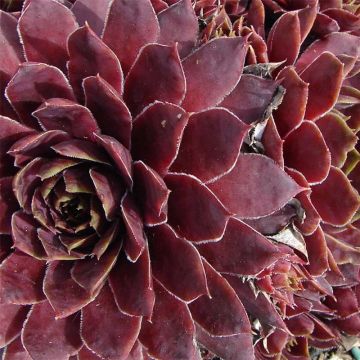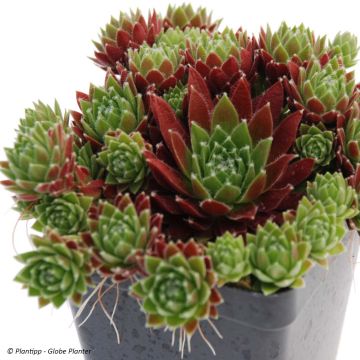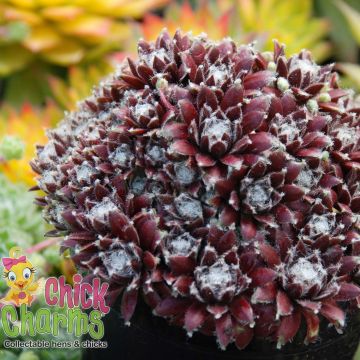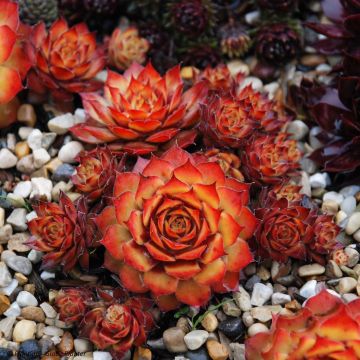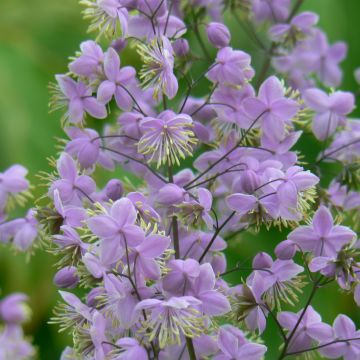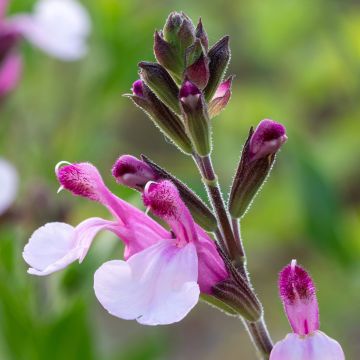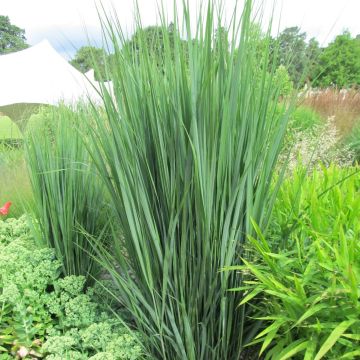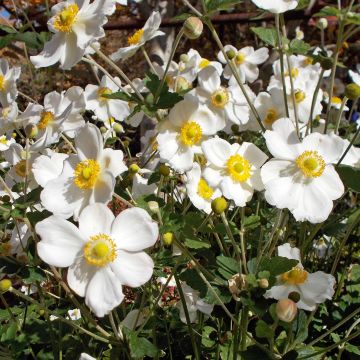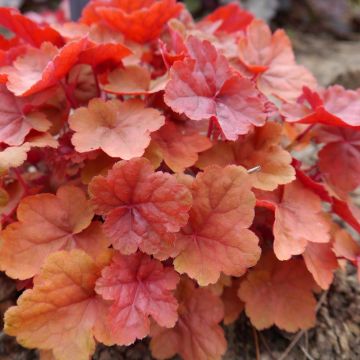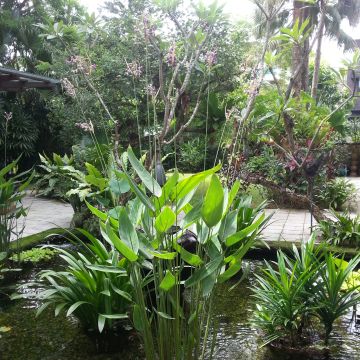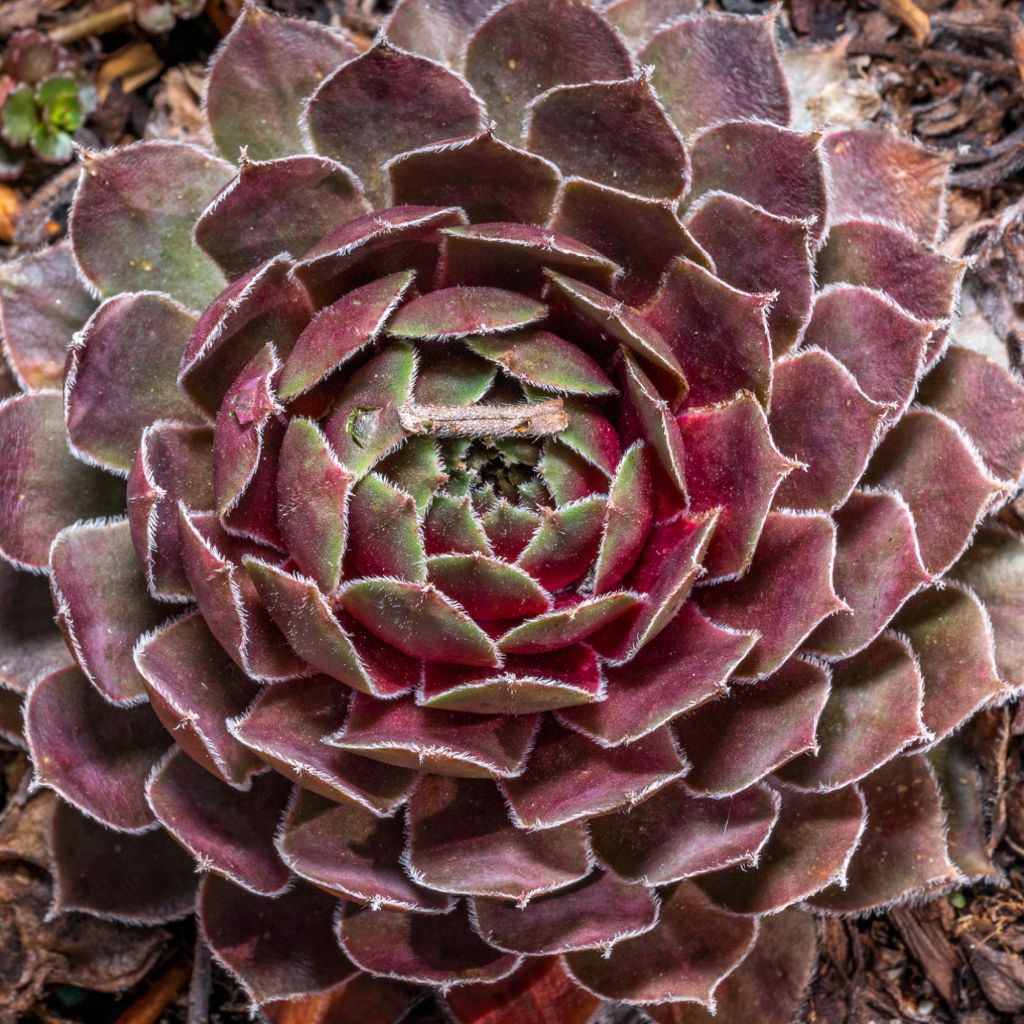

Sempervivum Ruby Star
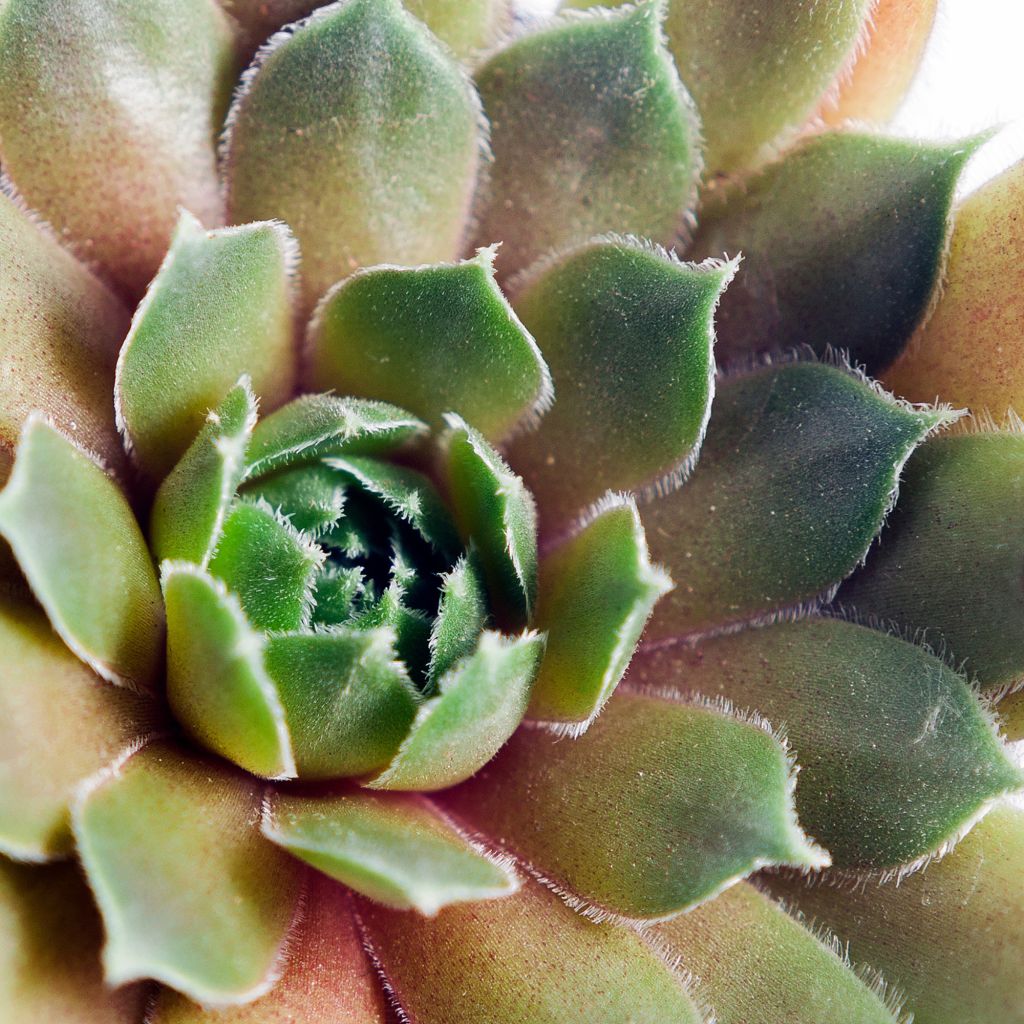

Sempervivum Ruby Star
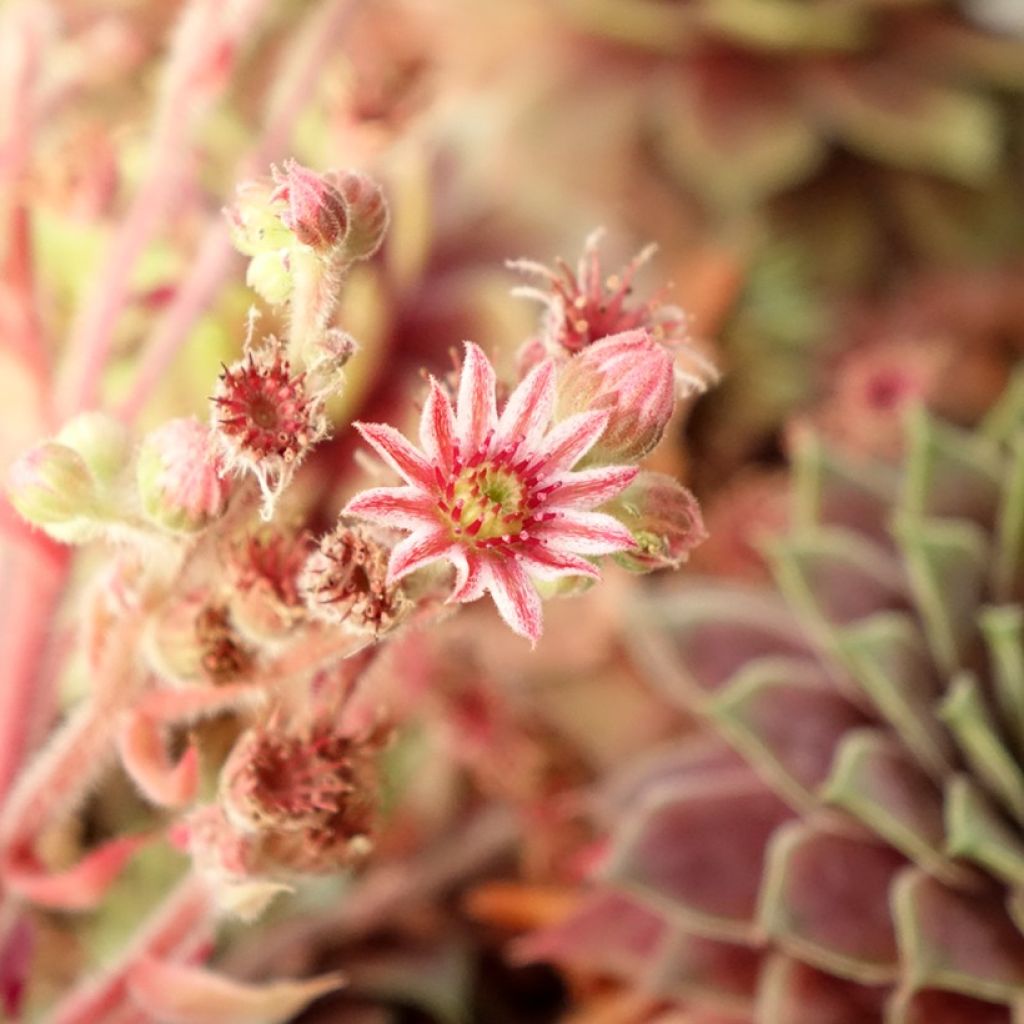

Sempervivum Ruby Star
Sempervivum Ruby Star
Sempervivum (BigSam series) Ruby Star
Houseleek, Liveforever, Hen and Chicks
Why not try an alternative variety in stock?
View all →This plant carries a 12 months recovery warranty
More information
We guarantee the quality of our plants for a full growing cycle, and will replace at our expense any plant that fails to recover under normal climatic and planting conditions.
From €5.90 for pickup delivery and €6.90 for home delivery
Express home delivery from €8.90.
Does this plant fit my garden?
Set up your Plantfit profile →
Description
Sempervivum 'Ruby Star' (BigSam™ Series) is a recent variety of houseleek, featuring very large evergreen rosettes in purple-violet, shaded with red. Thriving in dry and not too rich soils, it will work well in pots and rockeries and will gradually form an attractive, efficient, and undemanding ground cover.
Houseleeks, or Jupiter's Beard (referring to their shaggy appearance) belong to the Crassulaceae family, which includes, among others, sedums, kalanchoes, aeoniums, ... almost all of which are succulent plants (also known as crassulacean plants, referring to the family), capable of storing water in their thick leaves and resisting long droughts. Sempervivum are no exception and can even establish themselves on very shallow supports, such as the moss carpet on old roofs or the crevices in an old stone wall. They were once believed to have the power to repel lightning, and their presence was encouraged on buildings. They form persistent rosettes, resembling small "artichokes," with spoon-shaped leaves ending in a point. In early summer, rosettes aged 2-3 years produce a tall flower stalk of 10 to 30 cm, impressive compared to the size of the plant, but with relatively inconspicuous pink flowers. Generally, the "mother" rosette dies after flowering, leaving behind numerous small rosettes that will take its place and gradually enlarge the clump, eventually forming a charming dense and low-growing ground cover. Wild species are mostly a beautiful bluish-green or tender green, often with a thin waxy layer to protect them from the sun's heat.
In recent years, horticultural selection has brought forth superb cultivars with more original foliage and colours. The houseleeks of the recent BigSam™ series stand out for their particularly large and robust rosettes, reaching 12 to 15 cm in diameter. The 'Ruby Star' variety has entirely reddish-purple rosettes, sometimes reddish-violet, with occasional bluish or slightly greener touches if lacking sunlight. A magnificent ever-evolving tableau!
Houseleeks are undemanding, hardy, and resistant, they simply require a sunny exposure and not too rich, well-drained soil, preferably sandy or rocky. In overly rich soil or partial shade, the rosettes tend to become elongated and lose their elegance. If winters are humid, make sure to raise your plants slightly or improve drainage by adding coarse sand, gravel, or pumice. In these conditions, they can withstand -15°C without any problem. They are capable of enduring long dry periods, especially if the substrate is deep enough to allow their fleshy roots to establish properly.
Due to their generous and water-tolerant nature, houseleeks make excellent container plants, perfect for sunny rockeries, alongside a 'April Night' woodland sage, immortelle, Cat's Eyes dwarf iris, or dryland grasses like Sesleria heufleriana.
Report an error about the product description
Flowering
Foliage
Plant habit
Botanical data
Sempervivum
(BigSam series) Ruby Star
Crassulaceae
Houseleek, Liveforever, Hen and Chicks
Cultivar or hybrid
Other Sempervivum - Houseleek
Planting and care
Sempervivum plants like sunny to semi-shaded exposures, and perfectly drained, moist to dry, poor soils that do not retain water. You can plant them in the ground or in pots in spring or autumn, adding gravel or coarse sand to the planting substrate. Conversely, if you place them in a rock garden or on a wall, just give them a little soil to allow them to establish. Afterwards, they will take care of themselves.
If you want to propagate them, simply cut a few young rosettes and replant them elsewhere, slightly burying the roots. Take care of them by ensuring they are not overwhelmed by taller plants or covered with dead leaves or vegetation, and by removing any faded small inflorescences.
Planting period
Intended location
Care
This item has not been reviewed yet - be the first to leave a review about it.
Summer flowering perennials
Haven't found what you were looking for?
Hardiness is the lowest winter temperature a plant can endure without suffering serious damage or even dying. However, hardiness is affected by location (a sheltered area, such as a patio), protection (winter cover) and soil type (hardiness is improved by well-drained soil).

Photo Sharing Terms & Conditions
In order to encourage gardeners to interact and share their experiences, Promesse de fleurs offers various media enabling content to be uploaded onto its Site - in particular via the ‘Photo sharing’ module.
The User agrees to refrain from:
- Posting any content that is illegal, prejudicial, insulting, racist, inciteful to hatred, revisionist, contrary to public decency, that infringes on privacy or on the privacy rights of third parties, in particular the publicity rights of persons and goods, intellectual property rights, or the right to privacy.
- Submitting content on behalf of a third party;
- Impersonate the identity of a third party and/or publish any personal information about a third party;
In general, the User undertakes to refrain from any unethical behaviour.
All Content (in particular text, comments, files, images, photos, videos, creative works, etc.), which may be subject to property or intellectual property rights, image or other private rights, shall remain the property of the User, subject to the limited rights granted by the terms of the licence granted by Promesse de fleurs as stated below. Users are at liberty to publish or not to publish such Content on the Site, notably via the ‘Photo Sharing’ facility, and accept that this Content shall be made public and freely accessible, notably on the Internet.
Users further acknowledge, undertake to have ,and guarantee that they hold all necessary rights and permissions to publish such material on the Site, in particular with regard to the legislation in force pertaining to any privacy, property, intellectual property, image, or contractual rights, or rights of any other nature. By publishing such Content on the Site, Users acknowledge accepting full liability as publishers of the Content within the meaning of the law, and grant Promesse de fleurs, free of charge, an inclusive, worldwide licence for the said Content for the entire duration of its publication, including all reproduction, representation, up/downloading, displaying, performing, transmission, and storage rights.
Users also grant permission for their name to be linked to the Content and accept that this link may not always be made available.
By engaging in posting material, Users consent to their Content becoming automatically accessible on the Internet, in particular on other sites and/or blogs and/or web pages of the Promesse de fleurs site, including in particular social pages and the Promesse de fleurs catalogue.
Users may secure the removal of entrusted content free of charge by issuing a simple request via our contact form.
The flowering period indicated on our website applies to countries and regions located in USDA zone 8 (France, the United Kingdom, Ireland, the Netherlands, etc.)
It will vary according to where you live:
- In zones 9 to 10 (Italy, Spain, Greece, etc.), flowering will occur about 2 to 4 weeks earlier.
- In zones 6 to 7 (Germany, Poland, Slovenia, and lower mountainous regions), flowering will be delayed by 2 to 3 weeks.
- In zone 5 (Central Europe, Scandinavia), blooming will be delayed by 3 to 5 weeks.
In temperate climates, pruning of spring-flowering shrubs (forsythia, spireas, etc.) should be done just after flowering.
Pruning of summer-flowering shrubs (Indian Lilac, Perovskia, etc.) can be done in winter or spring.
In cold regions as well as with frost-sensitive plants, avoid pruning too early when severe frosts may still occur.
The planting period indicated on our website applies to countries and regions located in USDA zone 8 (France, United Kingdom, Ireland, Netherlands).
It will vary according to where you live:
- In Mediterranean zones (Marseille, Madrid, Milan, etc.), autumn and winter are the best planting periods.
- In continental zones (Strasbourg, Munich, Vienna, etc.), delay planting by 2 to 3 weeks in spring and bring it forward by 2 to 4 weeks in autumn.
- In mountainous regions (the Alps, Pyrenees, Carpathians, etc.), it is best to plant in late spring (May-June) or late summer (August-September).
The harvesting period indicated on our website applies to countries and regions in USDA zone 8 (France, England, Ireland, the Netherlands).
In colder areas (Scandinavia, Poland, Austria...) fruit and vegetable harvests are likely to be delayed by 3-4 weeks.
In warmer areas (Italy, Spain, Greece, etc.), harvesting will probably take place earlier, depending on weather conditions.
The sowing periods indicated on our website apply to countries and regions within USDA Zone 8 (France, UK, Ireland, Netherlands).
In colder areas (Scandinavia, Poland, Austria...), delay any outdoor sowing by 3-4 weeks, or sow under glass.
In warmer climes (Italy, Spain, Greece, etc.), bring outdoor sowing forward by a few weeks.

































